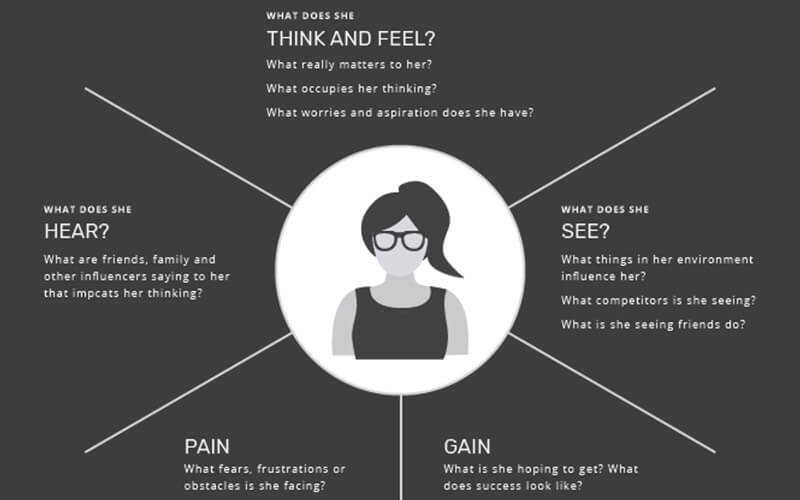What is a Buyer Persona?
You wouldn’t buy a car without first doing some research, so why would you dive into content marketing without a plan? You’re not just creating content for the sake of writing a few nice articles; your goal is to engage prospective buyers. Likewise, knowing who your audience is and understanding information about the audience buying your products is key to helping you maximize your efforts, the effectiveness of your content and your “return-on-investment” (otherwise known as ROI). To achieve this you need a strategy which reflects your goals, knowledge and understanding of your target audiences concerns, content concepts which align with their concerns and a calendar for developing content moving forward.
To understand core customers many companies create buyer (or customer) personas. Buyer personas help you to gain an understanding of your prospective buyers; making it easier to target your content, messaging, products and services to your ideal customer. In doing so, you can play to their needs, behaviors and concerns.

Creating a buyer persona is all about segmenting your audience which is necessary because the customers in your audience do not all have the same traits. By segmenting your audience into sub-groups of people who do share similar demographics, interests and behaviors you are able to create messaging strategies targeted more succinctly at each sub-group. Likewise, when you create personas, you’re really just segmenting your audience into sub-groups to get a full understanding of what makes your customers tick.
What is a Buyer Persona?
It’s possible that you are one of 68% of B2B and 73% of B2C marketers who are focused on creating buyer personas as part of their content marketing strategies.
Ardath Albee defines a persona as
More directly, buyer personas are fictional, broad characters who help you to define what your ideal and largest markets look like. They will typically include not just demographics information (age, location, income) but extend to psychographic information (interests, concerns, likes, dislikes, barriers to purchase) too.

Negative Personas
While a buyer persona is a picture of your ideal consumer, a negative persona represents the type of consumer you don’t want as a customer.
A few reasons you may not want to target specific customers include:
- They may not have budget
- They may not be a good fit for the product or service
- They may never buy from you
- They may become a customer but were expensive to acquire
By creating negative personas you spend time getting to know the people who will never be a customer of your business, and by doing so you are able to save time and money longer term by not wasting time marketing to this exclusionary audience.
Negative personas are crucial because they provide a framework of what not to do when creating marketing campaigns.

The Importance of Buyer Personas
At the most introductory level, buyer personas help guide you in the creation of content and messaging that appeals to your target consumer.
Buyer personas help you to:
- Conceptualize the types of content you need (eg E-Books, Videos, White Papers)
- Set the tone, voice, style and delivery of your content
- Determine the topics to cover in your content
- Understand your buyers; where they get their information and how they want to absorb it.
By not creating buyer personas you are guessing what your audience wants and needs. The downfall of this is that you are likely to make ill informed decisions about the type of information your customers are actively seeking.
Further, while you may feel you have a visual for understanding your customers it’s unlikely that every person in your company shares your vision. By defining your buyer personas on paper you’re able to keep everyone in the organization across your key audiences and ultra target ads and communications.
Buyer personas are never completely final; they should change as you learn new information about your customers and you may even stumble upon new buyer personas altogether. Either way, revisit your buyer personas every six months to review what you know and add new information.
Well defined buyer personas provide your content marketing, communications and ad targeting with a much stronger chance of success. The outcomes of which can include increased engagement on your social media channels to an increase in ROI for your online ads.
Like with any form of marketing, content marketing works best when you understand your audience and write specifically with a sub-group in mind. Well crafted buyer personas help you to identify motivations and interests and communicate with audience members in a language and tone they are open to receiving and will ensure you keep your buyer personas top of mind throughout every step of your process.
First published 09/28/2018 – updated on 03/12/2021
